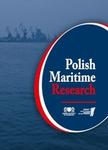版权所有:内蒙古大学图书馆 技术提供:维普资讯• 智图
内蒙古自治区呼和浩特市赛罕区大学西街235号 邮编: 010021

作者机构:Polish Naval Acad Gdynia Poland Maritime Adv Res Ctr CTO SA Gdansk Poland
出 版 物:《POLISH MARITIME RESEARCH》 (Pol. Marit. Res.)
年 卷 期:2024年第31卷第2期
页 面:67-76页
核心收录:
学科分类:08[工学] 0824[工学-船舶与海洋工程]
基 金:European Defence Agency [B-1466-GEM1-GP]
主 题:scale model tests CFD marine propeller fluid-structure interaction
摘 要:In the process of designing a marine propeller, hydroelasticity effects are neglected in most cases, due to the negligible influence of the blade s deformation on its hydrodynamic characteristics. However, there are cases where the impact of hydroelasticity is crucial, for example in the case of high skew-back propellers or heavy-loaded composite propellers. Furthermore, the importance of composite propellers is growing due to their wide range of application, for instance in naval ships and unmanned vehicles. Although structural models and two-way fluid-structure interactions are implemented in most commercial CFD solvers, their relevance to the design process is severely limited due to the high computational cost for a single iteration. An effective solution would therefore be to implement a two-way fluid-structure interaction model in the lifting surface software, which is commonly accepted as a design tool due to its relatively low computational time and its applicability to multi-criteria optimisation. This paper presents the results of hydrodynamic analyses of an elastic propeller carried out using in-house software based on the lifting surface flow model, and extended with the FEM model for the blade structure. The results are compared with experimental measurements and computational analyses with the commercial RANS solver STAR-CCM+.